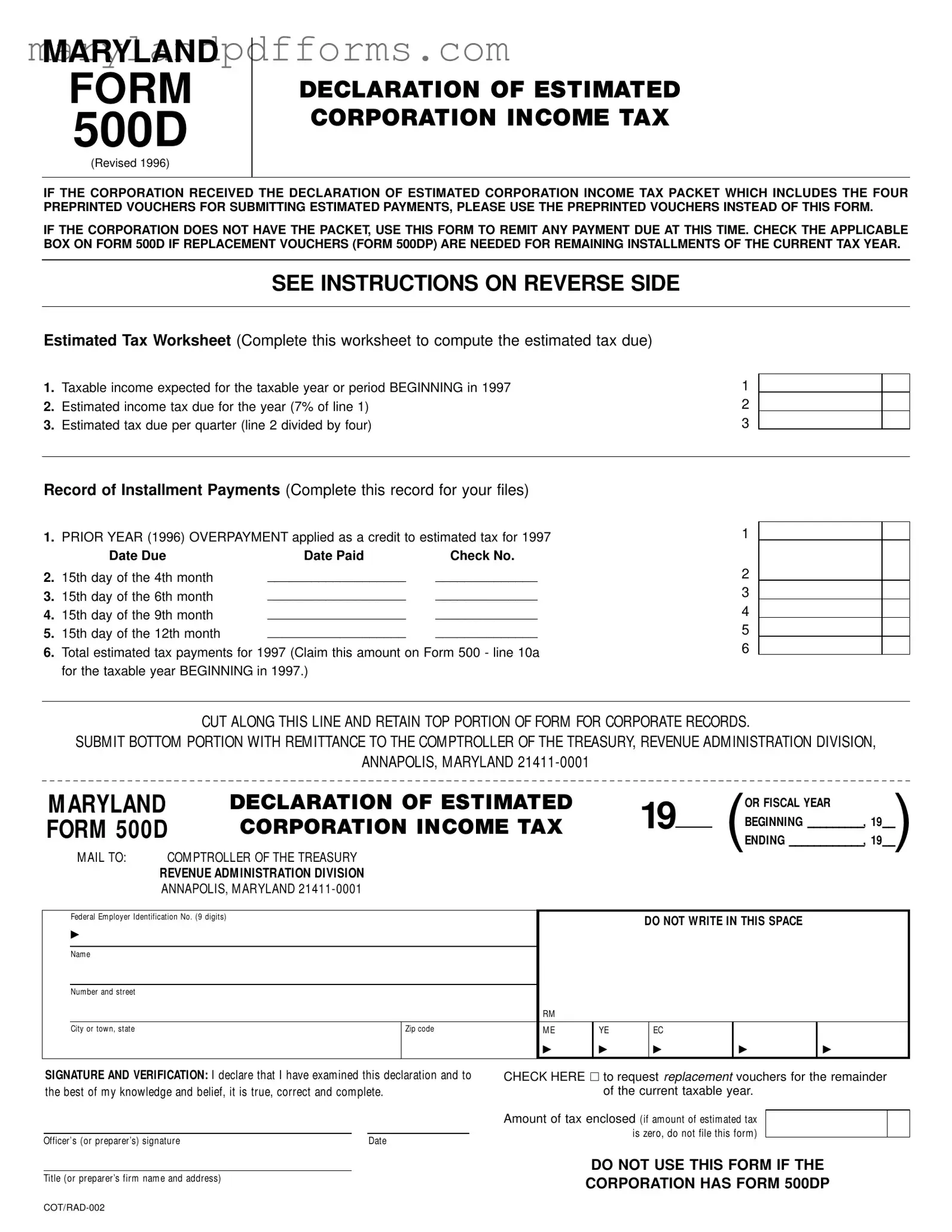Misconception 1: The Maryland 500D form is only for large corporations.
This form applies to any corporation that expects to owe more than $1,000 in taxes for the year. Size doesn't matter; if you meet the income threshold, you need to file.
Misconception 2: You can use the 500D form even if you received the preprinted vouchers.
If your corporation received the Declaration of Estimated Corporation Income Tax Packet, you should use the preprinted vouchers instead of the 500D form. Using the correct form ensures accurate processing.
Misconception 3: You don't need to make payments if you think you’ll have a loss.
Even if you anticipate a loss, if you expect to owe any tax, you must still make estimated payments. Not filing can lead to penalties.
Misconception 4: The 500D form can be used for pass-through entities.
This form is not applicable for pass-through entities like S corporations. They have different filing requirements.
Misconception 5: You can submit the form anytime during the year.
The 500D form must be filed by specific due dates: the 15th day of the 4th, 6th, 9th, and 12th months after your tax year begins. Late submissions can incur penalties.
Misconception 6: You don’t need to sign the form if you’re submitting it electronically.
An authorized officer or preparer must sign the form, regardless of how it’s submitted. This verifies the accuracy of the information provided.
Misconception 7: You can send cash with the form.
Cash payments are not allowed. Always include a check or money order made out to the Comptroller of the Treasury.
Misconception 8: You can file the 500D form without entering the Federal Employer Identification Number (FEIN).
Entering the FEIN is mandatory. If you don’t have one, you must apply for it immediately before filing the form.
